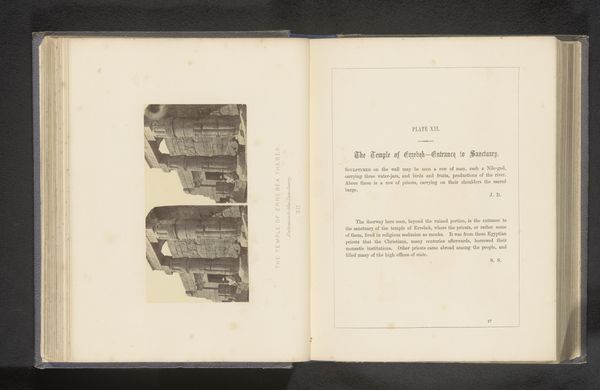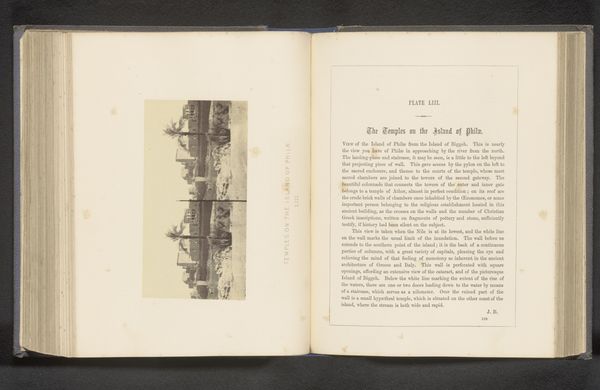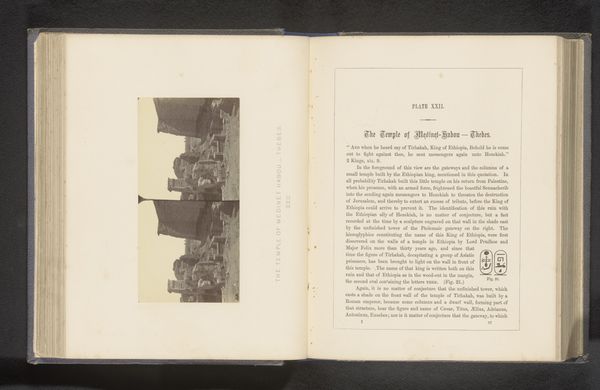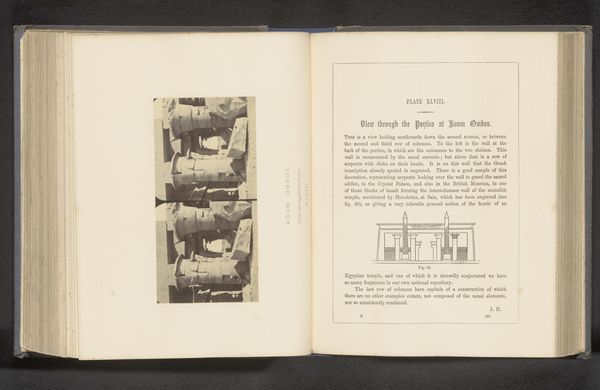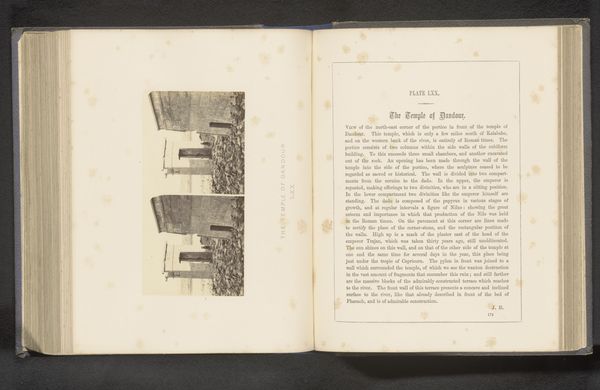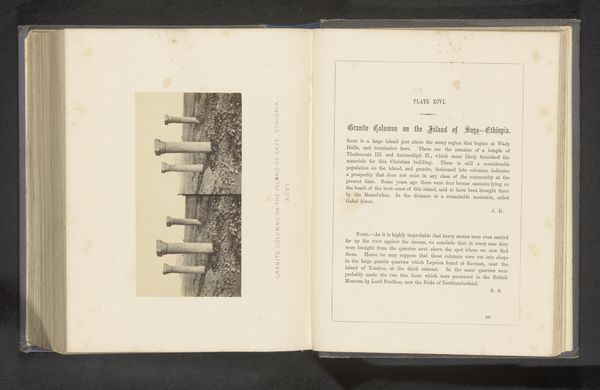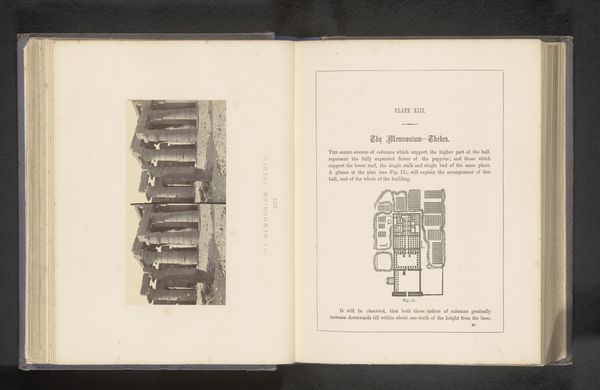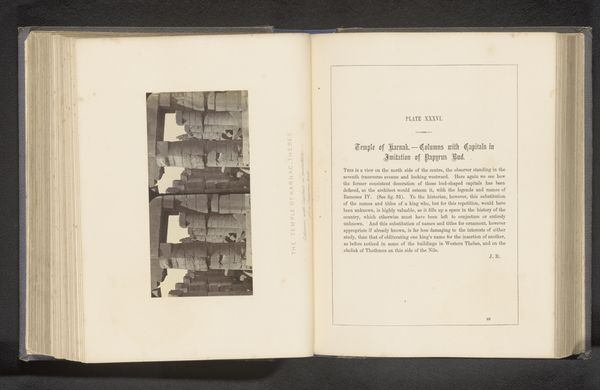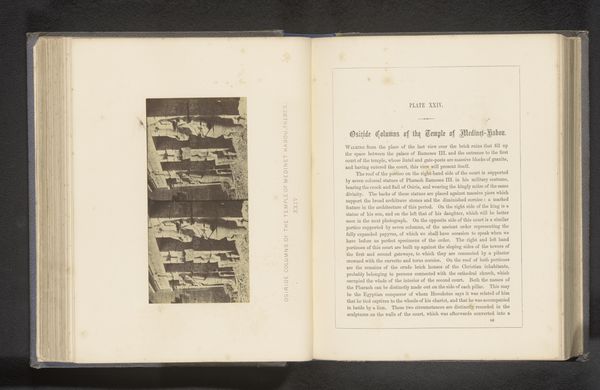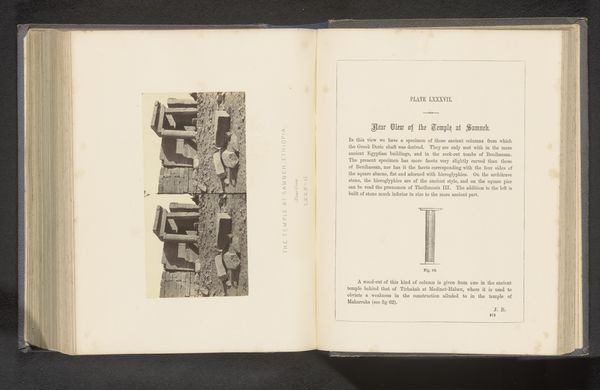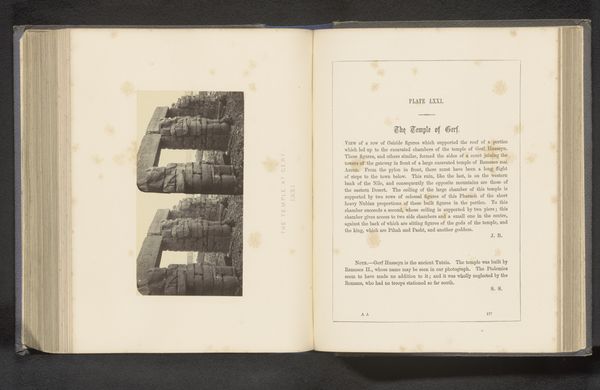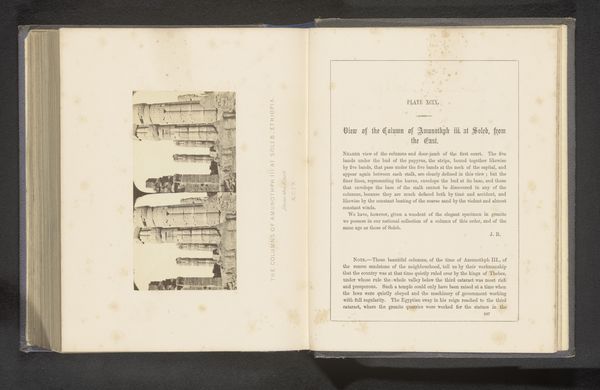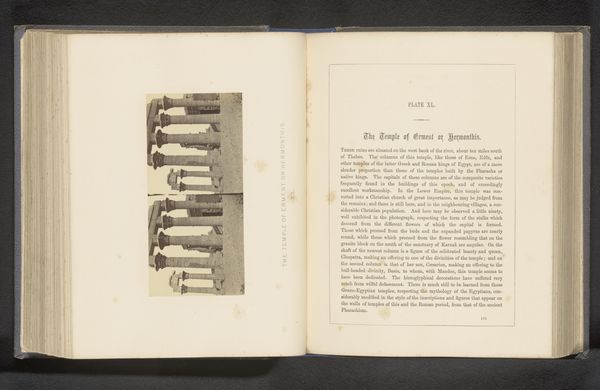
print, photography, gelatin-silver-print, architecture
# print
#
landscape
#
ancient-egyptian-art
#
photography
#
ancient-mediterranean
#
gelatin-silver-print
#
architecture
Dimensions: height 70 mm, width 145 mm
Copyright: Rijks Museum: Open Domain
This is a photograph of the Ramesseum at Thebes, taken by Francis Frith. It captures the temple columns, adorned with symbols of immense cultural and historical significance. Note the hieroglyphs, the sun disk, and the uraeus—the sacred serpent. These aren't mere decorations, but powerful emblems embodying divine authority and royal protection. The sun disk, representing Ra, the sun god, symbolizes life, energy, and rebirth, while the uraeus signifies sovereignty and divine protection, often seen guarding pharaohs. Consider how the serpent motif appears across cultures. From the ouroboros, the snake consuming its tail, symbolizing cyclicality in ancient Greece, to the serpent in the Garden of Eden, these symbols weave through the collective unconscious, evoking primal fears and profound wisdom. The image leaves us with more questions than answers. The Ramesseum, once a beacon of power, now stands in ruins, a testament to the cyclical nature of civilization.
Comments
No comments
Be the first to comment and join the conversation on the ultimate creative platform.
